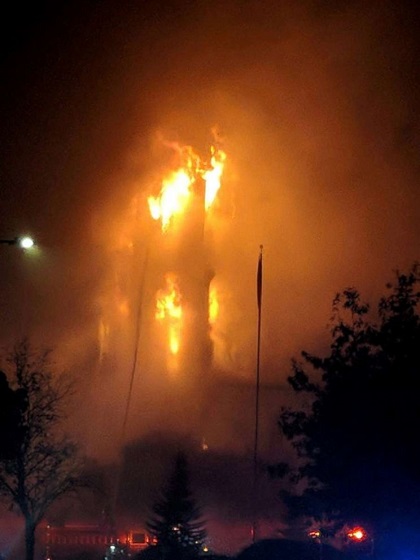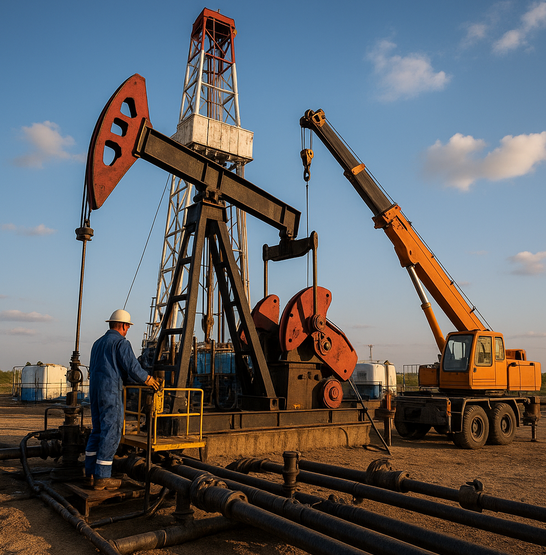Frontier Centre for Public Policy
It’s Time To Stop Church Arsons And What Fuels Them

From the Frontier Centre for Public Policy
By Lee Harding
Religious freedoms and the right to worship have been a recognized hallmark of civilized societies for centuries. The preamble of Canada’s constitution says our country is built on the principles that acknowledge the supremacy of God and the rule of law. In defiance of both, almost 600 Canadian places of worship have suffered arson in recent years. Nothing could be more unCanadian.
The stats were revealed by Member of Parliament Marc Dalton following a formal inquiry to the federal government. The response showed 592 arsons had been set on places of worship between 2010 and 2022. they rose from 58 in 2020 to 90 in 2021, then down to 74 in 2022.
The peak coincides with claims made in May of 2021 that the remains of 215 school children had been discovered on the site of the former Kamloops Residential School.
Although Prime Minister Justin Trudeau called a subsequent wave of church burnings “unacceptable and wrong” he also called their likely motivations “real and fully understandable.” This hardly doused the flames.
These arsons far outnumber those made on Canadian churches in the 1920s by the Ku Klux Klan, which opposed non-Protestants and non-whites. In those years the KKK desecrated Sarnia’s St. Joseph’s Catholic Church. They killed ten people when they set Saint-Boniface College in Winnipeg on fire. They also burned the Cathedral-Basilica of Notre-Dame de Quebec. In 1926, three Klan members were jailed after they blew up St. Mary’s Roman Catholic Church in Barrie, Ont.
The Klan soon fizzled out, seemingly unlike these recent church burnings. The 110-year-old Notre-Dame-des-Sept-Allégresses Catholic church burned down in Trois-Rivières, Quebec last month, but whether arson was involved has not been confirmed.
The presence of bodies underneath the former residential school in Kamloops has not been confirmed either. A 1924 septic field could also account for soil anomalies found there by ground-penetrating radar. Eight million federal tax dollars spent to investigate the site have yielded no remains and details on how the money was spent are sketchy. It’s high time the site was excavated to confirm or rule out the graves and do autopsies on any corpses found there.
Federal funds also fuel the Canadian Anti-Hate Network (CAHN), the Orwellian title for a group that fuels resentment against socially conservative organizations with negative characterizations. On August 7, CAHN published “40 Ways To Fight The Far-Right: Tactics for Community Activists in Canada” thanks to $640,000 from Ottawa.
“White boys and men make up the majority of people involved in hate-promoting movements,” the handbook explains. Pro-life and pro-parent groups, CAHN says, are among those “characterized by racism, antisemitism, Islamophobia, misogyny, anti-2SLGBTQ+ views, and pro-colonialist/ anti-Indigenous bigotry.”
CAHN says the Catholic-dominated, pro-life organization Campaign Life Coalition is a “hate movement.” Liberty Coalition Canada, a legal defence organization, and the activist organization Action4Canada are similarly denigrated for their alleged belief that Canada was founded on Christian values and attempts to reassert such values.
Meanwhile, the CAHN guide advocates “antifascist” doxing, including infiltration of right-leaning organizations. getting people fired, and ending friendships.
Dalton’s Bill C-411 the “Anti-Arson Act” would do more to deter hate-motivated crimes than CAHN ever will. The legislation would punish those who set fires and explosions at religious places. A first offence would get a mandatory five-year jail sentence, while subsequent offenses would prompt seven years.
When respect for the supremacy of God and the rule of law fail, rights give way to wrongs. It’s time to stop the fires and the disputable claims that fuel them, and restore respect for people of faith, their right to worship, and their places of worship.
Lee Harding is a Research Associate for the Frontier Centre for Public Policy.
Frontier Centre for Public Policy
New Book Warns The Decline In Marriage Comes At A High Cost

From the Frontier Centre for Public Policy
Travis Smith reviews I… Do? by Andrea Mrozek and Peter Jon Mitchell, showing that marriage is a public good, not just private choice, arguing culture, not politics, must lead any revival of this vital institution.
Andrea Mrozek and Peter Jon Mitchell, in I… Do?, write that the fading value of marriage is a threat to social stability
I… Do? by Andrea Mrozek and Peter Jon Mitchell manages to say something both obvious and radical: marriage matters. And not just for sentimental reasons. Marriage is a public good, the authors attest.
The book is a modestly sized but extensively researched work that compiles decades of social science data to make one central point: stable marriages improve individual and societal well-being. Married people are generally healthier, wealthier and more resilient. Children from married-parent homes do better across almost every major indicator: academic success, mental health, future earnings and reduced contact with the justice system.
The authors refer to this consistent pattern as the “marriage advantage.” It’s not simply about income. Even in low-income households, children raised by married parents tend to outperform their peers from single-parent families. Mrozek and Mitchell make the case that marriage functions as a stabilizing institution, producing better outcomes not just for couples and kids but for communities and, by extension, the country.
While the book compiles an impressive array of empirical findings, it is clear the authors know that data alone can’t fix what’s broken. There’s a quiet but important concession in these pages: if statistics alone could persuade people to value marriage, we would already be seeing a turnaround.
Marriage in Canada is in sharp decline. Fewer people are getting married, the average age of first marriage continues to climb, and fertility rates are hitting historic lows. The cultural narrative has shifted. Marriage is seen less as a cornerstone of adult life and more as a personal lifestyle choice, often put off indefinitely while people wait to feel ready, build their careers or find emotional stability.
The real value of I… Do? lies in its recognition that the solutions are not primarily political. Policy changes might help stop making things worse, but politicians are not going to rescue marriage. In fact, asking them to may be counterproductive. Looking to politicians to save marriage would involve misunderstanding both marriage and politics. Mrozek and Mitchell suggest the best the state can do is remove disincentives, such as tax policies and benefit structures that inadvertently penalize marriage, and otherwise get out of the way.
The liberal tradition once understood that family should be considered prior to politics for good reason. Love is higher than justice, and the relationships based in it should be kept safely outside the grasp of bureaucrats, ideologues, and power-seekers. The more marriage has been politicized over recent decades, the more it has been reshaped in ways that promote dependency on the impersonal and depersonalizing benefactions of the state.
The book takes a brief detour into the politics of same-sex marriage. Mrozek laments that the topic has become politically untouchable. I would argue that revisiting that battle is neither advisable nor desirable. By now, most Canadians likely know same-sex couples whose marriages demonstrate the same qualities and advantages the authors otherwise praise.
Where I… Do? really shines is in its final section. After pages of statistics, the authors turn to something far more powerful: culture. They explore how civil society—including faith communities, neighbourhoods, voluntary associations and the arts can help revive a vision of marriage that is compelling, accessible and rooted in human experience. They point to storytelling, mentorship and personal witness as ways to rebuild a marriage culture from the ground up.
It’s here that the book moves from description to inspiration. Mrozek and Mitchell acknowledge the limits of top-down efforts and instead offer the beginnings of a grassroots roadmap. Their suggestions are tentative but important: showcase healthy marriages, celebrate commitment and encourage institutions to support rather than undermine families.
This is not a utopian manifesto. It’s a realistic, often sobering look at how far marriage has fallen off the public radar and what it might take to put it back. In a political climate where even mentioning marriage as a public good can raise eyebrows, I… Do? attempts to reframe the conversation.
To be clear, this is not a book for policy wonks or ideologues. It’s for parents, educators, community leaders and anyone concerned about social cohesion. It’s for Gen Xers wondering if their children will ever give them grandchildren. It’s for Gen Zers wondering if marriage is still worth it. And it’s for those in between, hoping to build something lasting in a culture that too often encourages the opposite.
If your experiences already tell you that strong, healthy marriages are among the greatest of human goods, I… Do? will affirm what you know. If you’re skeptical, it won’t convert you overnight, but it might spark a much-needed conversation.
Travis D. Smith is an associate professor of political science at Concordia University in Montreal. This book review was submitted by the Frontier Centre for Public Policy.
Carbon Tax
Canada’s Carbon Tax Is A Disaster For Our Economy And Oil Industry

From the Frontier Centre for Public Policy
By Lee Harding
Lee Harding exposes the truth behind Canada’s sky-high carbon tax—one that’s hurting our oil industry and driving businesses away. With foreign oil paying next to nothing, Harding argues this policy is putting Canada at a major economic disadvantage. It’s time to rethink this costly approach.
Our sky-high carbon tax places Canadian businesses at a huge disadvantage and is pushing investment overseas
No carbon tax will ever satisfy global-warming advocates, but by most measures, Canada’s carbon tax is already too high.
This unfortunate reality was brought to light by Resource Works, a B.C.-based non-profit research and advocacy organization. In March, one of their papers outlined the disproportionate and damaging effects of Canada’s carbon taxes.
The study found that the average carbon tax among the top 20 oil-exporting nations, excluding Canada, was $0.70 per tonne of carbon emissions in fiscal 2023. With Canada included, that average jumps to $6.77 per tonne.
At least Canada demands the same standards for foreign producers as it does for domestic ones, right? Wrong.
Most of Canada’s oil imports come from the U.S., Saudi Arabia, and Nigeria, none of which impose a carbon tax. Only 2.8 per cent of Canada’s oil imports come from the modestly carbon-taxing countries of the U.K. and Colombia.
Canada’s federal consumer carbon tax was $80 per tonne, set to reach $170 by 2030, until Prime Minister Mark Carney reduced it to zero on March 14. However, parallel carbon taxes on industry remain in place and continue to rise.
Resource Works estimates Canada’s effective carbon tax at $58.94 per tonne for fiscal 2023, while foreign oil entering Canada had an effective tax of just $0.30 per tonne.
“This results in a 196-fold disparity, effectively functioning as a domestic tariff against Canadian oil production,” the research memo notes. Forget Donald Trump—Ottawa undermines our country more effectively than anyone else.
Canada is responsible for 1.5 per cent of global CO2 emissions, but the study estimates that Canada paid one-third of all carbon taxes in 2023. Mexico, with nearly the same emissions, paid just $3 billion in carbon taxes for 2023-24, far less than Canada’s $44 billion.
Resource Works also calculated that Canada alone raised the global per-tonne carbon tax average from $1.63 to $2.44. To be Canadian is to be heavily taxed.
Historically, the Canadian dollar and oil and gas investment in Canada tracked the global price of oil, but not anymore. A disconnect began in 2016 when the Trudeau government cancelled the Northern Gateway pipeline and banned tanker traffic on B.C.’s north coast.
The carbon tax was introduced in 2019 at $15 per tonne, a rate that increased annually until this year. The study argues this “economic burden,” not shared by the rest of the world, has placed Canada at “a competitive disadvantage by accelerating capital flight and reinforcing economic headwinds.”
This “erosion of energy-sector investment” has broader economic consequences, including trade balance pressures and increased exchange rate volatility.
According to NASA, Canadian forest fires released 640 million metric tonnes of carbon in 2023, four times the amount from fossil fuel emissions. We should focus on fighting fires, not penalizing our fossil fuel industry.
Carney praised Canada’s carbon tax approach in his 2021 book Value(s), raising questions about how long his reprieve will last. He has suggested raising carbon taxes on industry, which would worsen Canada’s competitive disadvantage.
In contrast, Conservative leader Pierre Poilievre argued that extracting and exporting Canadian oil and gas could displace higher-carbon-emitting energy sources elsewhere, helping to reduce global emissions.
This approach makes more sense than imposing disproportionately high tax burdens on Canadians. Taxes won’t save the world.
Lee Harding is a research fellow for the Frontier Centre for Public Policy.
-

 International2 days ago
International2 days agoSecret Service suspends six agents nearly a year after Trump assassination attempt
-

 Bruce Dowbiggin1 day ago
Bruce Dowbiggin1 day agoThe Covid 19 Disaster: When Do We Get The Apologies?
-

 Crime19 hours ago
Crime19 hours agoSweeping Boston Indictment Points to Vast Chinese Narco-Smuggling and Illegal Alien Labor Plot via Mexican Border
-

 Alberta1 day ago
Alberta1 day agoAlberta school boards required to meet new standards for school library materials with regard to sexual content
-

 Business2 days ago
Business2 days agoWEF-linked Linda Yaccarino to step down as CEO of X
-

 Automotive2 days ago
Automotive2 days agoAmerica’s EV Industry Must Now Compete On A Level Playing Field
-

 Environment20 hours ago
Environment20 hours agoEPA releases report on chemtrails, climate manipulation
-

 Business2 days ago
Business2 days ago‘Experts’ Warned Free Markets Would Ruin Argentina — Looks Like They Were Dead Wrong



